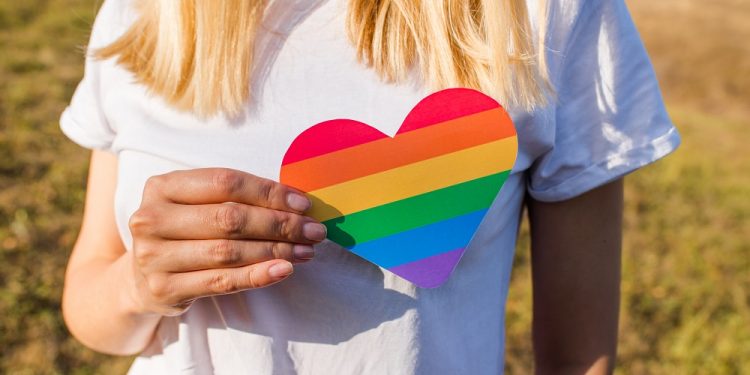
National Coming Out Day
National Coming Out Day is observed on the 11th of October every year. The purpose of this holiday is to support gay, lesbian, bisexual, pansexual, transgender, and other LGBT individuals and to encourage them to come out of the closet.
It’s also a day on which issues that affect the LGBT community can be addressed. Although this holiday is generally viewed by the wider community as a day on which gay men can express pride in themselves and their community, it’s also a day that many LGBT individuals use to come out to their families.
The History of National Coming Out Day
National Coming Out Day was first inaugurated in 1988 by Robert Eichberg and Jean O’Leary. Robert Eichberg was a psychologist from New Mexico, and Jean O’Leary was a lesbian activist and political leader from New York who was also the head of the National Gay Rights Advocates in Los Angeles.
They wanted to create a day that would help everyone celebrate coming out. They also felt that when people came out, it was better not only for the LGBT community but for the entire community because it gives people a chance to realize that they do indeed know someone who is part of the LGBT community, and this may help diminish the fears and stereotypes they may have.
The date of this holiday, October 11th, was chosen because it is the anniversary of the 1987 National March on Washington for Lesbian & Gay Rights. The 1987 National March on Washington for Lesbian & Gay Rights, also known as the Second National March on Washington for Lesbian and Gay Rights, took place in Washington D.C. on October 11, 1987.
This was a large political rally whose significance and historical importance have caused some people to name it “The Great March.” Let’s talk a little bit more about this march below.
The Second National March on Washington for Lesbian and Gay Rights
The Second National March on Washington for Lesbian and Gay Rights emerged from the desire in the LGBT community for a national march. This was driven by the fact that so many people were dying during the AIDS pandemic and the Reagan administration not only failed to take action to address the crisis but refused to even acknowledge that it was a crisis at all.
Another factor that further emphasized the need for a national march was the Supreme Court of the U.S. ruling in the Bowers v. Hardwick case. The Supreme Court upheld the criminalization of sodomy between two consenting men in the privacy of their own homes.
In 1986, Joyce Hunter and Steve Ault — co-coordinators of the 1979 National March on Washington for Lesbian & Gay Rights — decided to draft documents to find out if existing lesbian and gay organizations were interested in a new march.
The response was overwhelmingly favorable, so the two of them decided to organize an initial planning meeting in New York on July 16, 1986. It was at this meeting that it was decided that the march would take place in 1987.
A national conference was held, and representatives from every known lesbian and gay organization were invited to New York City on November 14th through 16th, 1986. At this conference, the logistics, politics, and organization of the march were discussed, and delegates had to address four primary concerns:
- What will a march on Washington accomplish?
- When should the march take place?
- How should LGBT and march organizers proceed?
- What should be the platform for the event?
Throughout the planning weekend of this conference, all of the delegates debated many different aspects of the march. This included things such as addressing the needs of lesbian and gay people of color, and those living with disabilities and/or poverty.
In January 1987, another meeting of the steering committee was held at city hall in the City of West Hollywood. The three national co-chairs of this event were elected at this meeting. The three co-chairs were Pat Norman, Steve Ault, and Kay Ostberg.
A few months later, starting on May 2, 1987, and continuing through May 3, 1987, the first organizational meeting took place in Atlanta. This meeting was used to iron out any existing logistical details and determine who would speak at the rally.
The delegates from the convention in West Hollywood came up with seven demands to serve as the platform for the 1987 march. Each of the seven demands branched out into a list of broader demands that went beyond the scope of single-issue LGBT concerns.
They hoped that this would underscore the fact that the oppression of one group affects the oppression of all groups. The seven primary demands of the delegates are listed below:
Second National March on Washington for Lesbian and Gay Rights Platform
- An end to racism in the United States and the end of apartheid in South Africa.
- Passage of the lesbian and gay civil rights bill in Congress.
- Legal recognition of gay and lesbian relationships.
- True reproductive freedom, an end to sexist oppression, and the right to control our own bodies.
- An end to discrimination against people with AIDS, HIV-positive status, or those individuals who are perceived to have AIDS. Also, increase funding for AIDS education, patient care, and research.
- A presidential order banning discrimination by the U.S. federal government.
- The repeal of all laws that made sodomy between consenting adults a crime.
The March & Supporting Activities
The March was led by Cesar Chavez, Eleanor Smeal, Jesse Jackson, and several other celebrities. This march was part of an event that had six days of activities.
Activities included a protest in front of the IRS on October 10, a mass wedding, and on October 13, civil disobedience in front of the Supreme Court building protesting its ruling against upholding the Bowers v. Hardwick decision.
The demonstration, rally, and march also included the first public display of the NAMES Project AIDS Memorial Quilt. The legacy of this march was that it inspired many participants to start their own chapters of ACT UP or other LGBT organizations.
To commemorate this march and to help continue the forward momentum that the organizers felt they had started, National Coming Out Day was established for the first time on October 11, 1988.
National Coming Out Day Themes
The first few years of the observance of National Coming Out Day involved celebrities and other high-profile people coming out to the public — usually through the media. However, as the risk of coming out has diminished slightly over the past few years, this day is being celebrated more and more as a holiday.
In 1999, the Human Rights Campaign began to give a theme to every year’s observation of this holiday. Each of the themes highlights the importance of coming out in one or two key areas. In 2014, they stopped adding themes to National Coming Out Day celebrations, but we’ve listed the themes they used from 1999 through 2014 below.
- 1999: Come Out to Congress.
- 2000: Think it O-o-ver (Who Will Pick the New Supremes?).
- 2001: An Out Odyssey.
- 2002: Being Out Rocks!
- 2003: It’s a Family Affair.
- 2004: Come Out. Speak Out. Vote.
- 2005: Talk About It.
- 2006: Talk About It.
- 2007: Talk About It.
- 2008: (No Theme).
- 2009: Conversations from the Heart.
- 2010: Coming Out for Equality.
- 2011: Coming Out for Equality.
- 2012: Come Out. Vote.
- 2013: Coming Out Still Matters.
- 2014: Coming Out Still Matters.
Criticisms Concerning This Holiday
Even though this holiday is designed to be one with positive connotations, concerns about this holiday have been voiced by people and organizations over the years. The main criticism is that this holiday perpetuates homonormativity.
Homonormativity is the privileging of heteronormative constructs and ideals into the broader lesbian and gay community and LGBT culture. While most critics still praise people who come out on this holiday as brave, their point is that it might not be appropriate for all people to come out.
For some people, coming out may lead to discrimination in the workplace, exile from social groups or the family, and may even lead to violence. These critics believe that people shouldn’t feel compelled to come out but should do so when and if they’re ready.
Supporting Someone Who Has Come Out
People who come out to their friends, family, and co-workers are exhibiting a great deal of trust towards the people they’re coming out to, so it should be taken as a responsibility to support them as much as possible.
If a person comes out to you, then affirm them without placing judgmental conditions on that affirmation. For example, if a child comes out as gay to their parent, the parent should tell them that they love them and are happy for them. They should never say something like “I love you despite you being gay.”
It’s important to create an affirming atmosphere and make them feel comfortable coming out. And when a person comes out to you, you shouldn’t out them to other friends or family members. After all, there can be real-life consequences to coming out, including potential violence or loss of employment.
Observing National Coming Out Day
National Coming Out Day is not only observed in the U.S. but all over the world. Members of the LGBT community can choose this day to come out to their parents, family members, friends, or anyone else they wish.
They can also use this holiday to express gay pride by wearing or displaying the rainbow flag. People can also use this holiday to organize and work on causes that benefit the LGBT community.








